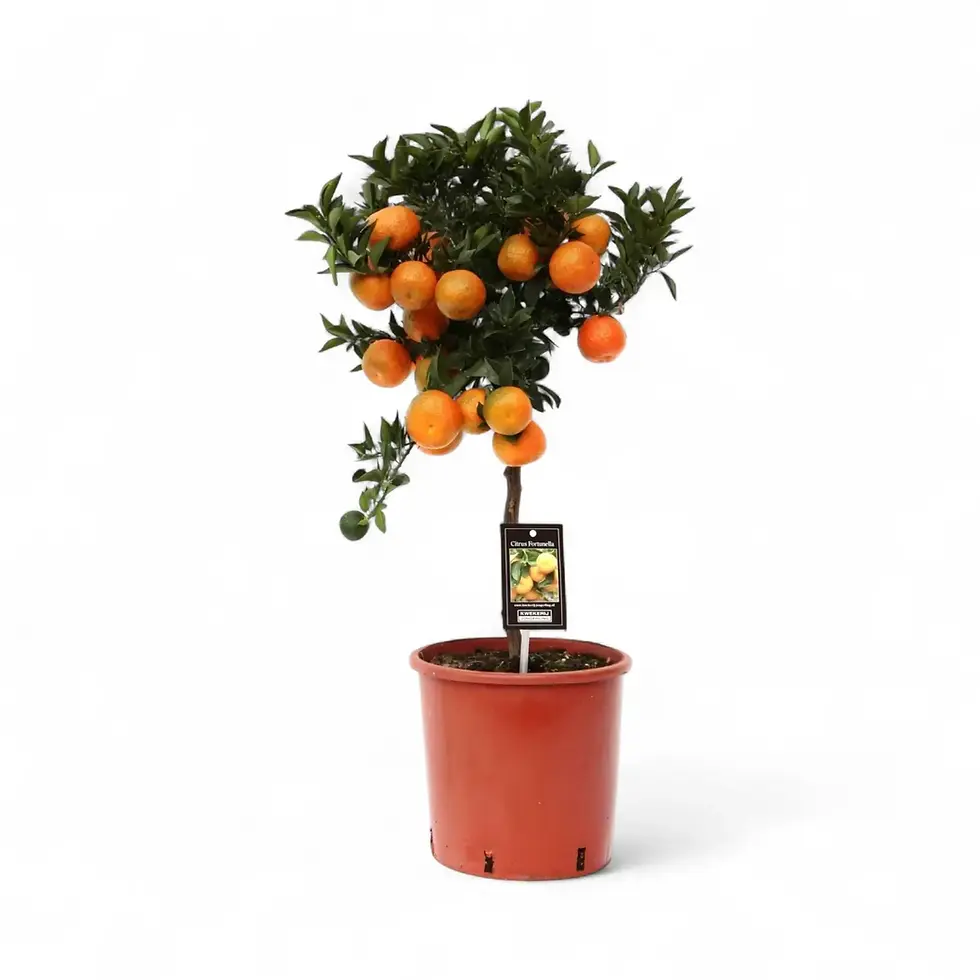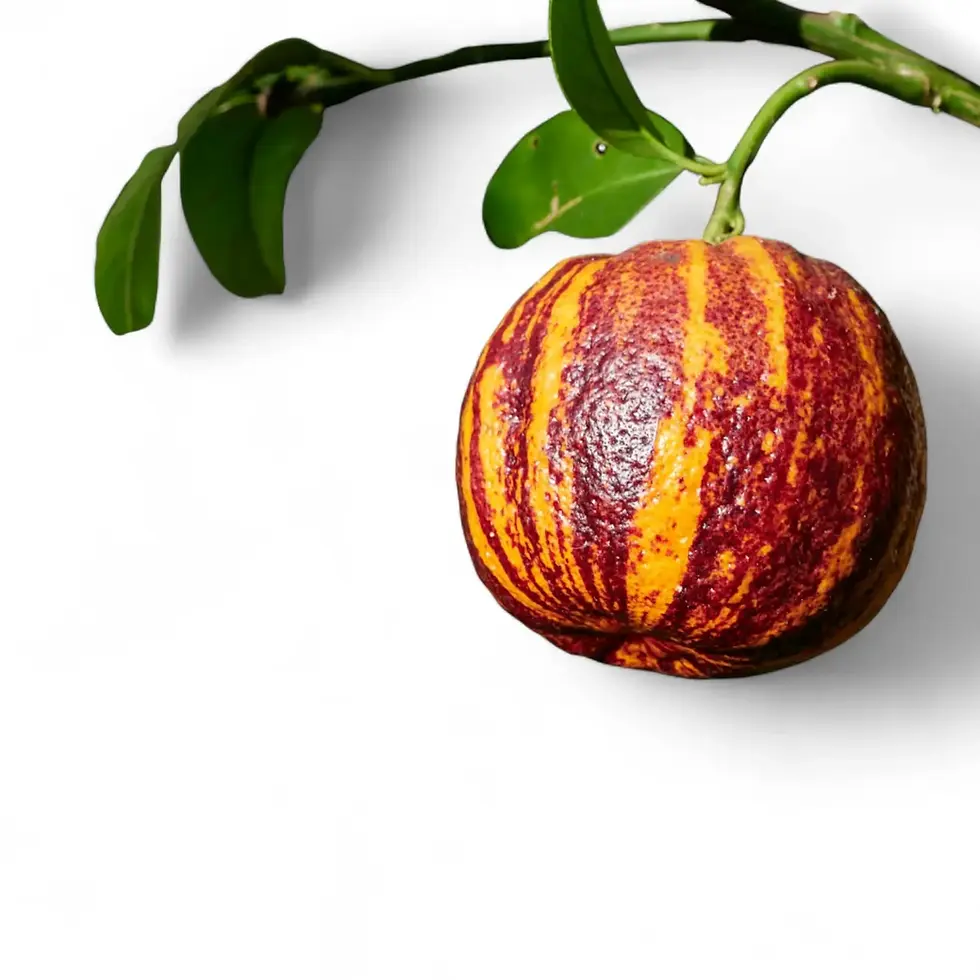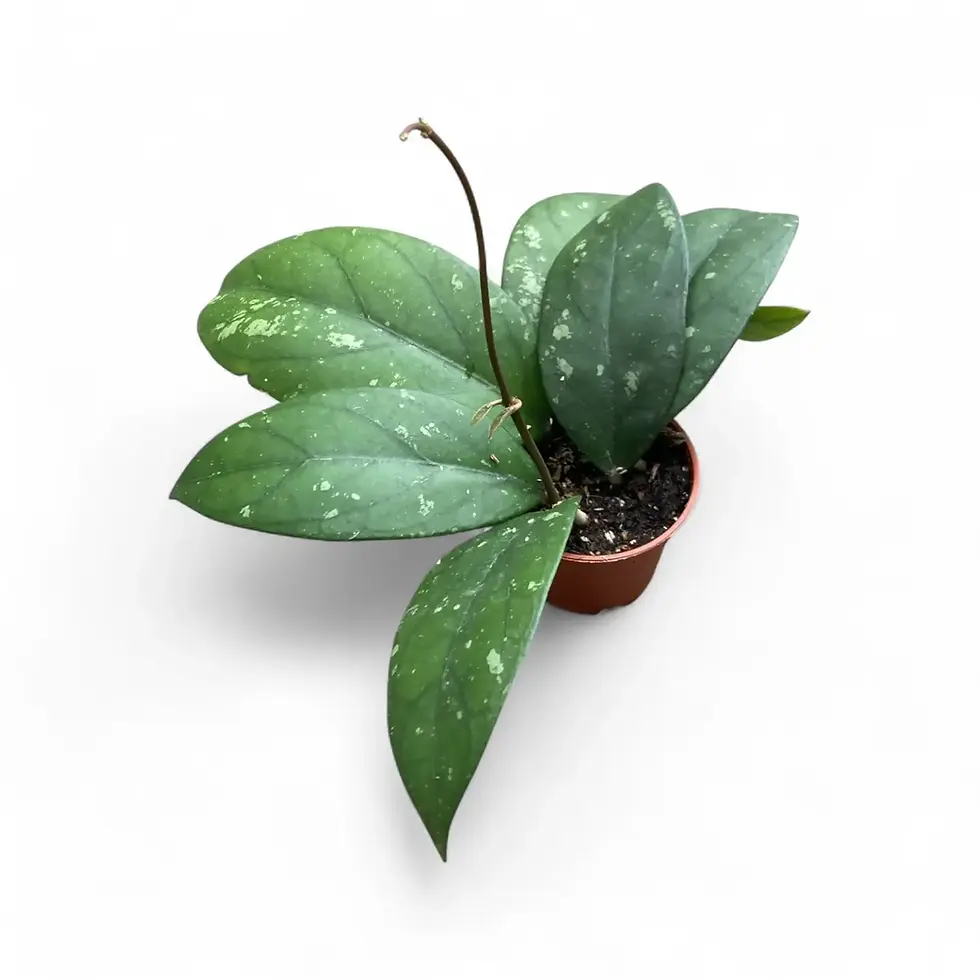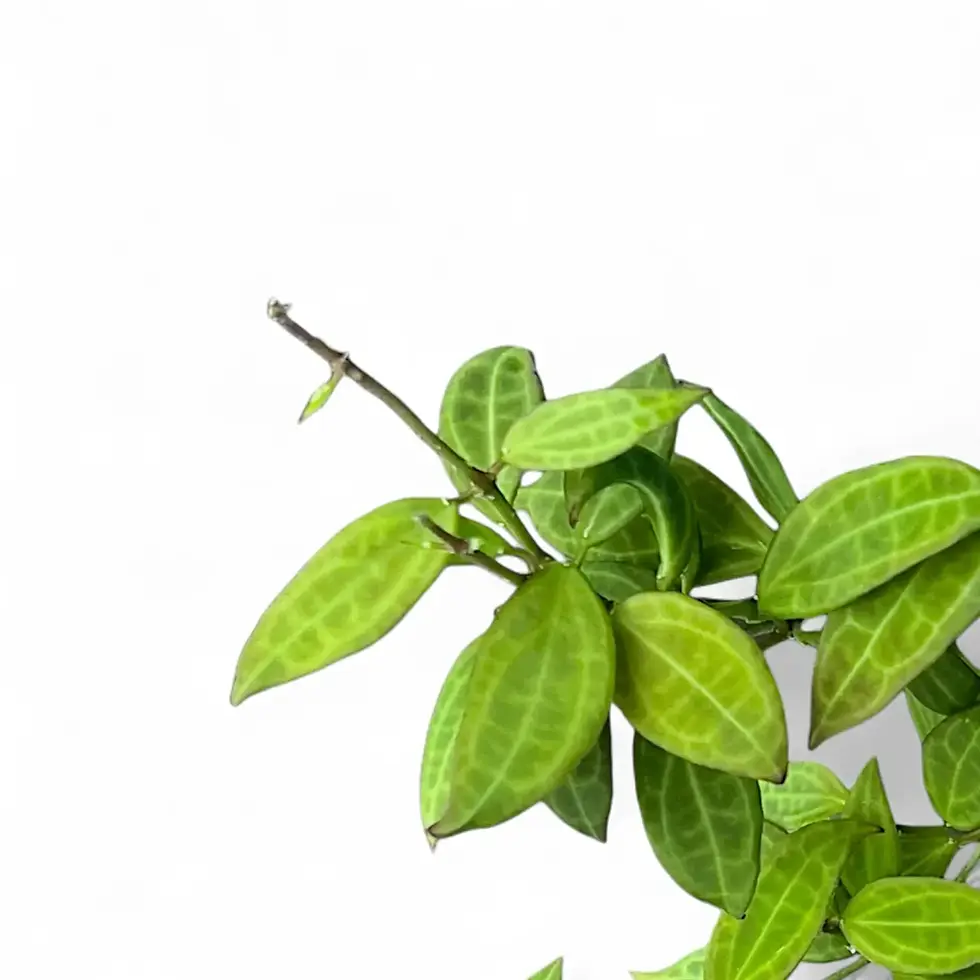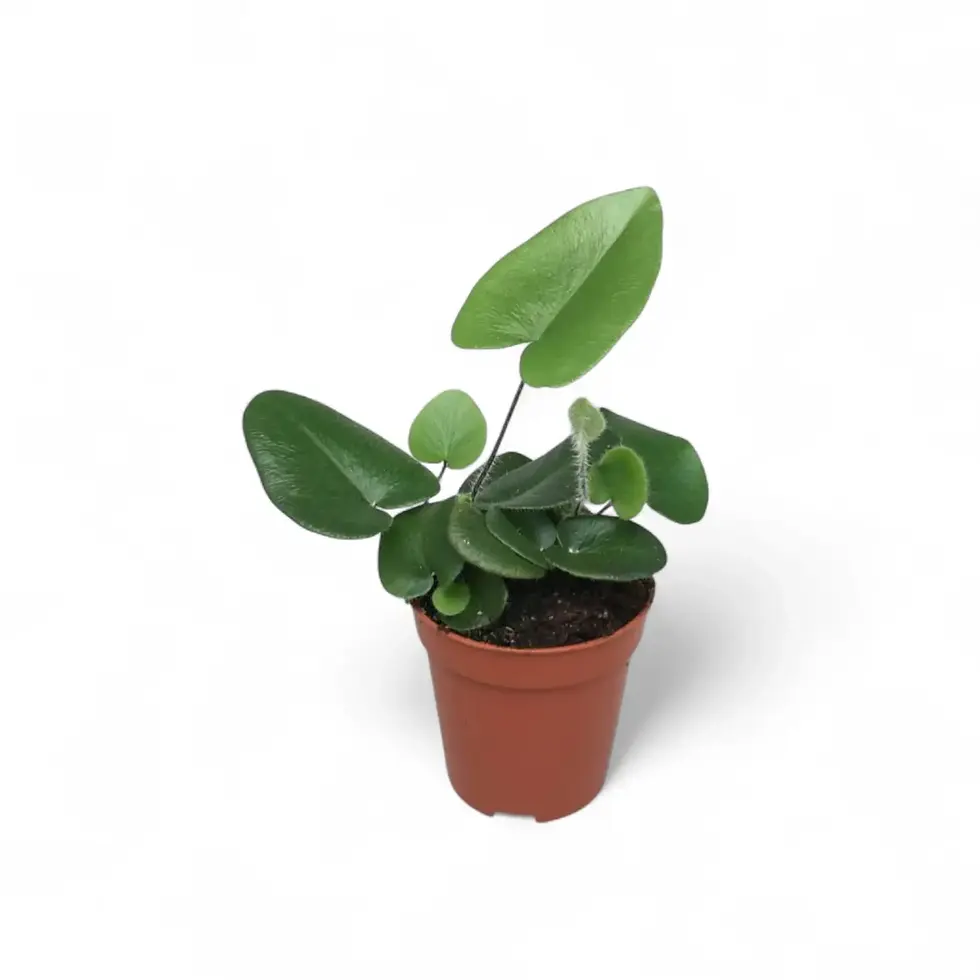Anthurium 'Dark Phoenix' – Rare Velvet Anthurium with Nearly Black Leaves
Anthurium 'Dark Phoenix' is a compact velvet-leaf aroid that’s made for collectors and design lovers alike. New foliage unfurls in deep burgundy, gradually darkening to a rich black-green with a soft, matte texture. Its upright, structured growth makes it a perfect shelf-sized statement plant — ideal for semi-hydroponic setups, glass cabinets, or shaded interiors that favor sculptural foliage over flowers.
Forget gimmicks — ‘Dark Phoenix’ is a stable, clonal selection that delivers consistent form, color depth, and long-term visual impact.
What ‘Dark Phoenix’ Really Is – A Velvet Anthurium Identity Check
This plant is often mislabeled as a hybrid like “papillilaminum × dressleri” or “TC 782,” but there's no verified link to Croat’s 1986 cross. Everything about its morphology points to Anthurium papillilaminum lineage:
- Rounded petioles with shallow grooves — no angular keels seen in A. dressleri
- Velvety, bullate surface typical of papillilaminum types
- Stable clonal traits across cultivated batches
First appearing in Southeast Asian trade around 2020, 'Dark Phoenix' is now a recognized name for this distinctive black-leaf form.
Distinctive Traits of ‘Dark Phoenix’ Velvet Foliage
- Leaf Shape: Broadly cordate with deep lobes and a narrow sinus
- Surface: Matte, velvety finish with gentle bullation — no glossing over time
- Color Progression: Deep burgundy when young, darkening to near-black green
- Petioles: Smooth and rounded, no dressleri-style ridges
- Growth Size: 40–60 cm tall indoors; compact and manageable
- Flowering: Rare; inflorescences resemble those of A. papillilaminum, with green or purplish spadices and pale spathes
Natural Habitat of Parent Species – Anthurium papillilaminum
Anthurium papillilaminum is native to the humid lowland forests of central Panama, growing at 100–600 m elevation. It thrives in deeply shaded, stable microclimates with high humidity and steady warmth. Found both terrestrially and epiphytically — especially on limestone-rich outcrops or moss-covered trunks — it has evolved to favor soft filtered light and coarse, airy substrates. These traits are echoed in the performance and care needs of ‘Dark Phoenix.’
How to Grow Anthurium 'Dark Phoenix' Indoors
- Lighting: Bright, indirect or filtered light is ideal. Avoid direct sun — it can damage the velvet surface.
- Watering: Water when the top 10–15 % of the soil or mineral mix dries out. Avoid extremes.
- Humidity: Prefers 60–80 %. Brown tips often signal that humidity is too low.
- Temperature: Grows best between 18–27 °C. Avoid cold drafts or drops below 15 °C.
- Substrate: Use a breathable aroid mix with bark, perlite, coco coir, and humus.
- Feeding: Monthly with a balanced, diluted aroid fertilizer during active growth.
- Repotting: Every 2–3 years or once rootbound. Choose a snug but breathable container.
- Semi-Hydro Use: Adapts well to mineral substrates if nutrients and wicking are stable.
Troubleshooting Tips for ‘Dark Phoenix’
- Brown Edges: Often from low humidity or delayed watering — correct conditions promptly.
- Yellowing Leaves: May signal overwatering or dense substrate. Improve drainage.
- Leaf Curling: Cold air or dry conditions are the usual cause — relocate if needed.
- Slow Growth: Normal during winter; otherwise, increase filtered light and feed monthly.
How to Style Anthurium 'Dark Phoenix' at Home
This plant thrives when showcased. Its dark velvet texture contrasts beautifully against matte ceramics, glass cabinets, or warm wood. Use it as a statement piece on a shelf, in a terrarium, or under grow lights with other compact aroids. Avoid locations with fluctuating temperatures or overly bright exposure — this plant thrives on stability and subtle light.
Safety Note
Contains calcium oxalate crystals. Toxic if ingested — keep away from pets and children.
Cultivar Identity and Collector Value
‘Dark Phoenix’ is not a formally registered cultivar, but the name has become widely recognized for this dark papillilaminum variant. Its compact form, near-black foliage, and consistent velvety texture make it a standout choice for rare aroid enthusiasts and design-forward collections alike.
FAQs – Growing Anthurium 'Dark Phoenix'
- Is this a true species? No — it's a trade name for a papillilaminum-type selection.
- Is it part dressleri? Unlikely — the plant lacks dressleri’s angular petiole ridging and sheen.
- Does it flower indoors? Rarely — blooms are subtle and not the main appeal.
- Can it tolerate low light? It survives in shade but develops richer color in bright filtered light.
- Is this plant safe for pets? No — it is toxic if ingested.
- Does it need a cabinet or enclosure? Not required, but a stable, humid environment (60 %+) will improve growth and leaf quality.
Order Anthurium 'Dark Phoenix' – Velvet Texture, Bold Contrast
Get Anthurium 'Dark Phoenix' now from Foliage Factory and elevate your collection with rare, velvety foliage in dramatic near-black tones. Compact, low-maintenance, and unforgettable — this is a must-have for every serious aroid grower.
Anthurium 'Dark Phoenix'
Anthurium 'Dark Phoenix' is approximately 20 cm tall and comes in a ⌀ 12 cm pot.





